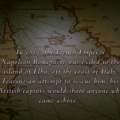Kortárs dokumentumfilm Kelet-Közép-Európában
Kelet-Közép-Európa fogalma politikai-történelmi értelmezések csatatere. A határhúzás és kirekesztés szándéka nélkül, a közös történelem felől közelítünk a kelet-közép-európai dokumentumfilmhez, és gondoljuk jogosultnak a régió önálló értelmezését. A huszadik század közepétől az államszocialista berendezkedés, a Szovjetuniótól való szoros függőség (vagy a balti államok esetében a Szovjetunióhoz csatolás), az 1989-ben (illetve a balti államok esetében valamivel később) kezdődött gazdasági-politikai átmenet, a demokrácia és a piacgazdaság alapjainak kiépítése, majd azt követően az európai integrációs folyamatba történő bekapcsolódás, végül a kétezres évek első évtizedében az Európai Unióhoz csatlakozás (vagy a balkáni országok egy része, Szerbia, Montenegró, Észak-Macedónia esetében az EU-s tárgyalások megindulása) számos olyan közös mozzanat, amelyek lehetővé teszik, hogy a párhuzamos történeti folyamatok okán rákérdezzünk a filmipar és filmművészet e szegmense, a dokumentumfilm lehetséges regionális hasonlóságaira, párhuzamosságaira és fejlődési irányaira.
Szerkesztette Stőhr Lóránt és Török Ervin
Renata Šukaitytė: A kortárs litván dokumentumfilm fő irányainak kritikai áttekintése
Jitka Lanšperková: A cseh dokumentumfilm-gyártás új ökoszisztémája a kilencvenes években
Gerencsér Péter: Bársonyos (re)generáció: Az új szlovák dokumentarizmus az ezredforduló után
Török Ervin: A személyesség invenciói a magyar dokumentumfilmben
Contemporary Documentary in Central and Eastern Europe
The concept of Central and Eastern Europe is a battleground for political and historical interpretations. Without intending to draw borders and to make exclusions, we approach Central and Eastern European documentaries from their common history, and we think the region can be regarded as a unique entity in its own term. Based on parallel historical processes, significant common features emerge that allow us to ask about the possible regional similarities, parallels and trends in the development of relevant segments of the industry and the art of cinema and documentary film. The range of historical parallels include the following: from the middle of the twentieth century onwards, first the period of state-socialist political system with its close dependence on the Soviet Union (or annexation to the Soviet Union in the case of the Baltic States), forty-fifty years later the economic-political transition that began in 1989 (or a little later in the Baltic States), building the foundations of democracy and a market economy, then joining the European integration process, and finally the accession to the European Union in the first decade of the 2000s (or the start of EU negotiations in some Balkan countries, Serbia, Montenegro and Northern Macedonia).
Editors: Lóránt Stőhr and Ervin Török
Proofreading: Ágnes Matuska
Jitka Lanšperková: A New Ecosystem of Czech Documentary Production in the 90s
Péter Gerencsér: Velvet (Re-)Generation: New Slovak Documentarism after the Turn of the Millennium
Ervin Török: Inventions of Personalness in Hungarian Documentary Filmmaking


